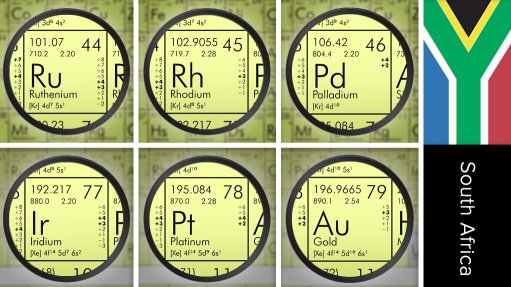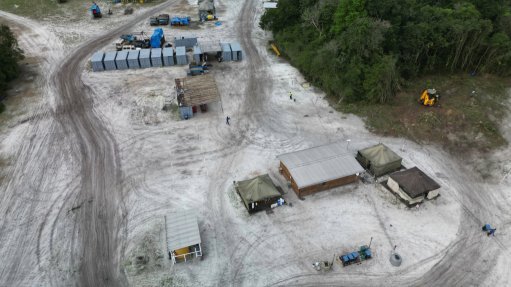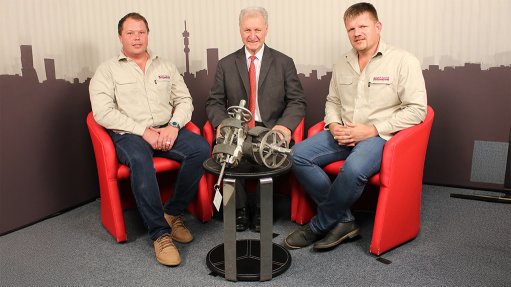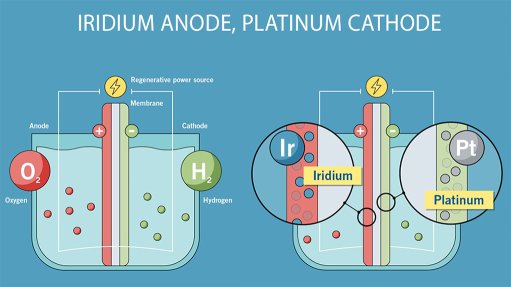Mill filling levels influence performance – experts
Under pressure to expand throughput, many mines’ semi-autogenous grinding (SAG) mills often become the bottleneck, with the increase in ball filling and mill filling either negatively or positively influencing the process performance, says mineral research organisation Mintek senior engineer Dr Sandile Nkwanyana.
Speaking at mill liner manufacturer TEGA Industries’ third technical conclave earlier this month, held at the Maslow Hotel, in Pretoria, he explained that SAG mills were designed to operate over a range of ball-filling levels, usually between 4% and 15%, and at high mill filling levels, with 26% mill filling being more typical in standard design tests.
“Inside the mill, granular material, including grinding media and ore particles, flows transversely. This flow, with cataracting and cascading streams and velocity gradients, establishes the collision environment, which drives size reduction through impact and attrition breakage,” said Nkwanyana.
In a 1.7-m-diameter mill, Mintek’s research has demonstrated that ball- and ore-filling levels govern the collision environment, which affects throughput, particularly energy use, grind size and circulating load.
Mintek concluded a study in 2024, and the results of discrete element method (DEM) simulations were validated with pilot plant tests using a 1.7-m-diameter mill.
Nkwanyana explained that DEM applied Newton’s laws to approximate collisions, treating them as elastically dissipative through a spring-dashpot model, integrating forces to calculate energy lost, which drives ore breakage.
The pilot plant included a hopper, belt feeder, mill conveyor, strain gauges, load cells and a vibrating screen for controlled studies, with simulations used to model steel balls and rocks in a variety of shapes, representing freshly broken and rounded ore.
“The simulation results show that increasing ball- and ore-filling levels intensifies hot spots where collision energy drives breakage,” he pointed out.
When comparing 5%, 12% and 15% ball loads, the higher loads produced richer and larger hot spots; however, beyond a certain mill filling, the normal component of collisions decreased, Nkwanyana added.
Energy use trends show that higher ball loads reduce milling efficiency, while higher filling levels enhance it. Increasing ball load or mill filling can raise throughput by creating a more energetic collision environment.
However, Nkwanyana noted that throughput and power curves were parabolic, and every mill had unique signature curves.
“Understanding these [enables] operators to assess efficiency, optimise energy use and identify if the mill has surpassed its optimal operating point,” he highlighted.
Increasing Uptime
Possible long-term issues of liners include cracks that can develop after a few weeks, requiring maintenance and replacement.
“Stainless steel liners usually start at around 202 Brinell Hardness [HB] to 250 HB and can harden locally during operation, leading to cracks and inconsistent performance,” said TEGA senior metallurgist Jennifer Giron at TEGA Industries’ third technical conclave.
However, TEGA’s liners have uniform high hardness, maintaining toughness and performance even under aggressive conditions such as high mill speeds or suboptimal mill operation, noted Giron.
In a case study from South America involving large mills operating under highly abrasive copper and copper/gold ores, the mills used balls of over four inches in size while operating at extreme speeds – about 3 700 revolutions per minute (rpm) to 4 500 rpm.
Since 2017, she said iterative improvements in liner design have reduced maintenance intervals from once a week to once every three weeks, and downtime from 120 to roughly 80 hours, yearly.
As such, liner life increased by about 53%, reducing replacements from three a year to two a year, translating to almost 2.8-million additional tonnes of throughput a year.
In another case involving a 900 cm SAG mill operating at various speeds and ball sizes of up to 15.2 cm, the maintenance had previously taken six weeks; but, using TEGA liners resulted in the client’s achieving 9.8 rpm, reducing downtime to once a week.
Throughput also increased by almost 7%, energy consumption decreased by 5% and specific energy improved by 14%, while liner life span increased by at least 25%. Yearly throughput increased from 18.6-million tonnes to over 20-million tonnes.
Moreover, TEGA also offered a solution to reduce liner weight by 33%, consequently allowing for operation in a single-stage SAG circuit.
At a copper/gold application, in Brazil, TEGA’s liners maintained a consistent, raised profile and outperformed competitor hybrids in wear, profile retention and life span.
“TEGA liners decreased downtime by 5%, shortened relines by at least ten hours, improved peak energy consumption and increased total yearly throughput by around 1.2-million tonnes,” Giron added.
In a case study from a ball mill in Peru that highlighted grind sensitivity, Giron stated that TEGA’s liners increased the active liner area by 80%, improving grind and achieving over 10 µm difference in comparison to competitors, with “excellent throughput”.
In this instance, lower specific energy consumption had been achieved using less power, and without having to compromise product size or tonnage.
Article Enquiry
Email Article
Save Article
Feedback
To advertise email advertising@creamermedia.co.za or click here
Press Office
Announcements
What's On
Subscribe to improve your user experience...
Option 1 (equivalent of R125 a month):
Receive a weekly copy of Creamer Media's Engineering News & Mining Weekly magazine
(print copy for those in South Africa and e-magazine for those outside of South Africa)
Receive daily email newsletters
Access to full search results
Access archive of magazine back copies
Access to Projects in Progress
Access to ONE Research Report of your choice in PDF format
Option 2 (equivalent of R375 a month):
All benefits from Option 1
PLUS
Access to Creamer Media's Research Channel Africa for ALL Research Reports, in PDF format, on various industrial and mining sectors
including Electricity; Water; Energy Transition; Hydrogen; Roads, Rail and Ports; Coal; Gold; Platinum; Battery Metals; etc.
Already a subscriber?
Forgotten your password?
Receive weekly copy of Creamer Media's Engineering News & Mining Weekly magazine (print copy for those in South Africa and e-magazine for those outside of South Africa)
➕
Recieve daily email newsletters
➕
Access to full search results
➕
Access archive of magazine back copies
➕
Access to Projects in Progress
➕
Access to ONE Research Report of your choice in PDF format
RESEARCH CHANNEL AFRICA
R4500 (equivalent of R375 a month)
SUBSCRIBEAll benefits from Option 1
➕
Access to Creamer Media's Research Channel Africa for ALL Research Reports on various industrial and mining sectors, in PDF format, including on:
Electricity
➕
Water
➕
Energy Transition
➕
Hydrogen
➕
Roads, Rail and Ports
➕
Coal
➕
Gold
➕
Platinum
➕
Battery Metals
➕
etc.
Receive all benefits from Option 1 or Option 2 delivered to numerous people at your company
➕
Multiple User names and Passwords for simultaneous log-ins
➕
Intranet integration access to all in your organisation


















